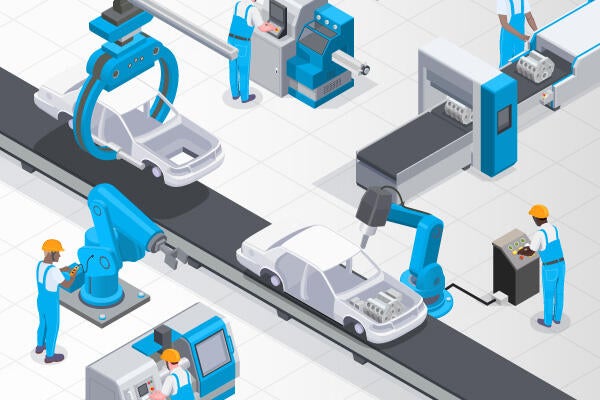Driving Forward: Exploring Innovations and Trends in the Automotive Industry

The automotive industry stands at a crossroads of transformation, propelled by technological advancements, changing consumer preferences, and global sustainability initiatives. In this comprehensive analysis, we delve into the dynamics shaping the automotive landscape, from electrification and autonomous driving to connectivity and mobility solutions. With a keen eye on the future, we explore the innovations and trends driving the automotive industry forward into a new era of mobility and sustainability.
One of the most significant shifts in the automotive industry is the move towards electrification. Electric vehicles (EVs) are gaining traction as viable alternatives to traditional internal combustion engine (ICE) vehicles, driven by advancements in battery technology, government incentives, and growing environmental awareness. Automakers are investing heavily in electric vehicle development, with a focus on expanding EV offerings, improving range, and reducing costs to make electric vehicles more accessible to consumers. The rise of EVs not only promises to reduce greenhouse gas emissions and mitigate climate change but also presents opportunities for innovation in energy storage, infrastructure development, and sustainable mobility solutions.
Autonomous Driving: Toward a Driverless Future
Autonomous driving technology represents another frontier in automotive innovation, with the potential to revolutionize transportation systems and reshape urban landscapes. Autonomous vehicles (AVs) equipped with advanced sensors, artificial intelligence, and machine learning algorithms have the capability to navigate roads, interpret traffic signals, and respond to changing road conditions without human intervention. While fully autonomous vehicles are still in the testing phase, semi-autonomous features such as adaptive cruise control, lane-keeping assist, and automatic emergency braking are already available in many vehicles on the market. As the technology matures and regulatory frameworks evolve, autonomous driving has the potential to improve road safety, reduce traffic congestion, and enhance mobility for individuals with disabilities or limited access to transportation.
Connectivity: The Rise of Smart Vehicles
In an increasingly connected world, vehicles are becoming more than just modes of transportation—they are evolving into smart, connected devices capable of communicating with each other and with the surrounding infrastructure. Connectivity features such as in-car Wi-Fi, telematics systems, and advanced infotainment systems are becoming standard offerings in modern vehicles, providing drivers with real-time traffic updates, navigation assistance, and entertainment options on the go. Moreover, vehicle-to-vehicle (V2V) and vehicle-to-infrastructure (V2I) communication technologies enable cars to share data and collaborate to improve safety, efficiency, and traffic flow on the roads. As automakers continue to integrate connectivity into their vehicles, the automotive industry is poised to play a central role in the broader ecosystem of the Internet of Things (IoT) and smart cities.
Mobility Solutions: Redefining Transportation Paradigms
Beyond traditional car ownership, the automotive industry is witnessing the rise of new mobility solutions that offer alternatives to private vehicle ownership and promote shared, sustainable transportation models. Ride-hailing services, car-sharing platforms, and micro-mobility solutions such as electric scooters and bicycles are gaining popularity in urban centers, providing commuters with convenient and cost-effective alternatives to driving. Additionally, subscription-based models and mobility-as-a-service (MaaS) platforms are emerging to offer consumers flexible access to a variety of transportation options, from public transit and ride-sharing to bike rentals and on-demand shuttles. By embracing a holistic approach to mobility that integrates various modes of transportation and promotes multi-modal connectivity, the automotive industry is poised to play a key role in shaping the future of urban mobility and transportation.
Sustainability: Navigating Environmental Imperatives
Amid growing concerns about climate change and environmental sustainability, the automotive industry is under increasing pressure to reduce its carbon footprint and embrace cleaner, greener technologies. In response, automakers are ramping up efforts to develop alternative fuel vehicles, improve fuel efficiency, and adopt eco-friendly manufacturing practices. Hybrid electric vehicles (HEVs), plug-in hybrid electric vehicles (PHEVs), and hydrogen fuel cell vehicles (FCVs) are gaining prominence as transitional solutions to reduce emissions and dependence on fossil fuels while paving the way for a fully electric future. Additionally, initiatives such as vehicle lightweighting, recycling programs, and renewable energy integration are driving sustainability efforts across the automotive supply chain, from production to end-of-life disposal. By prioritizing sustainability and embracing innovation, the automotive industry has the potential to become a driving force for positive environmental change and sustainable development.
Conclusion: Navigating the Road Ahead
In conclusion, the automotive industry is undergoing a period of unprecedented transformation, driven by technological innovation, shifting consumer preferences, and global sustainability imperatives. From electrification and autonomous driving to connectivity and mobility solutions, the industry is evolving rapidly to meet the challenges and opportunities of a rapidly changing world. By embracing innovation, collaboration, and sustainability, automakers and stakeholders across the automotive ecosystem can navigate the road ahead with confidence, driving forward toward a future of mobility that is cleaner, safer, and more accessible for all.

Enregistrement Binance
Thanks for sharing. I read many of your blog posts, cool, your blog is very good.